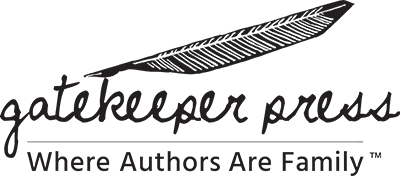We are all quite familiar with the striped little code edged in a series of numbers that appears on most of the items we purchase. Different products have slightly different variations of these digital fingerprints, but the purpose of them is the same — to provide an identification code that is unique to the product, or in our case, the book.
Where books are concerned, these identifiers are referred to as the ISBN, which stands for International Standard Book Number. Writers who aim to distribute their print book for sale, whether online or in bookstores, or want their book in libraries, must have an ISBN. If you are wondering how to get an ISBN for a book, follow this handy guide to learn all about this publication element.
What is an ISBN?
An ISBN consists of 13 digits that identify each and every published book in print. The numbers represent identifying information about the publisher, the country of publication, the title, the edition, and the author. An ISBN is set up in five segments:
- The prefix 978 designates the ISBN for a book.
- The registration group designates the country of origin or language group.
- The publisher identifier is a six-digit number.
- The registration code is a two-digit number.
- The check digit is mathematically calculated as a fixed single digit.
In most cases, the ISBN and barcode are located on the back cover, allowing the book to be conveniently scanned when purchased. The ISBN identifier is placed at the top and bottom of a barcode, with the book’s retail price adjacent to the ISBN.
Are ISBNs Necessary?
It makes no difference whether your book is traditionally published or self-published, it will need an ISBN before it can be distributed for sale online or in brick and mortar stores.
Authors are required to input the ISBN upon completing metadata fields when uploading the book to online retail platforms. The ISBN then provides useful book sales reporting data, as well as acting as an inventory control tool that booksellers rely on for reordering print versions of books.
An ISBN is not necessarily required for an eBook; however, there are instances when your eBook should have one. If you plan to publish your eBook only on the Kindle platform, there is no need to purchase an ISBN, as Amazon has its own ASIN tracking system.
However, if you intend to publish your eBook on multiple platforms, you may be required to have an ISBN, although some of the publishing platforms do provide the 13-digit ISBN at no charge.
How To Get an ISBN Number for a Book
Now that your question, “What is an ISBN?” has been answered, it’s time to actually procure one. Fortunately, when you arrive at the point that it’s time to purchase an ISBN, it is quite simple.
In the U.S., Bowker is the go-to ISBN agency for purchasing ISBNs, made available through its myidentifiers.com website. Follow these easy steps:
- Set up an account.
- Under the Register and Copyright Your Book tab, select “Buy ISBNs.”
- Review the options for purchasing an ISBN, an ISBN with barcode, or multiple ISBNs.
- Pay for your purchase.
- Ta-da! You are now the proud owner of your very own ISBN.
Currently, the fee to purchase a single ISBN and a single barcode is $150. There are other online sources to obtain ISBNs, but do your due diligence to ensure they are legit.
How To Get an ISBN Number for Free
Considering the various costs involved in self-publishing a book, it helps to know that not all retail bookseller platforms expect you to provide your own ISBN. Some platforms show you how to get an ISBN for free.
However, be aware that those assigned ISBNs are for use on that particular platform only. In other words, if Barnes & Noble assigns a free ISBN for your book, it is only valid on that platform, and would not be accepted on, say, Apple’s platform.
Frequently Asked Questions About ISBNs
As you explore what an ISBN is, and its purpose, consider this additional information:
Where do I find the ISBN on a book?
The ISBN is located on the copyright page and also on the back cover, usually in the lower section.
Are ISBNs and barcodes the same thing?
No, the ISBN consists of only the 13-digit numeric identifier, where the barcode is what is scanned when the book is purchased at a retailer. The ISBN is usually accompanied by a 5-digit code that signifies the price, which is incorporated into the barcode digital coding. If you decide to change the price of your book, the barcode and the 5-digit pricing code will change, but the ISBN will not. It remains the same regardless of the price of the book.
If I am publishing my book in print and as an eBook, can I use the same ISBN?
No, the ISBN will be unique for each format of your book being published. So, you will have a separate ISBN for the eBook version of your book.
Wrapping up Your Self-Published Book Project? You’ll Need an ISBN
When you round the corner to the editing phase of your self-published book process, you are ready to think about obtaining an ISBN. Now you have learned how to get an ISBN for a self-published book, and you understand its important role.
The ISBN will be incorporated into your copyright page and into your cover design on the back cover. Partner up with Gatekeeper Press for all your editing and book design needs, and the team will obtain the ISBNs for you as part of the package. Call Gatekeeper Press today!


